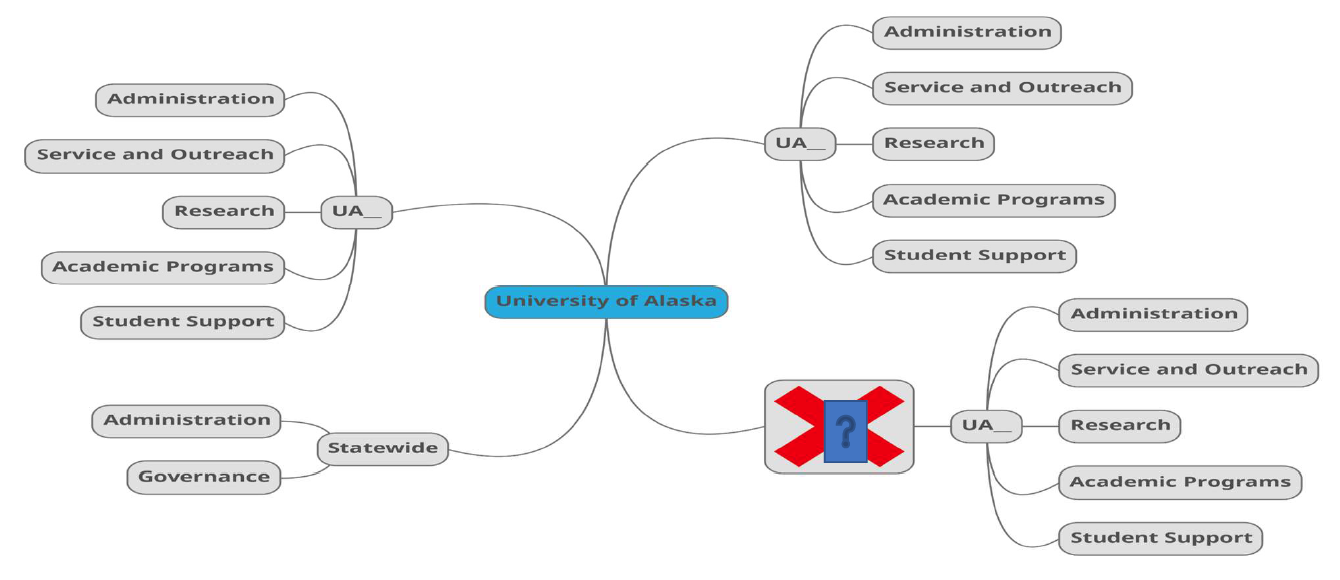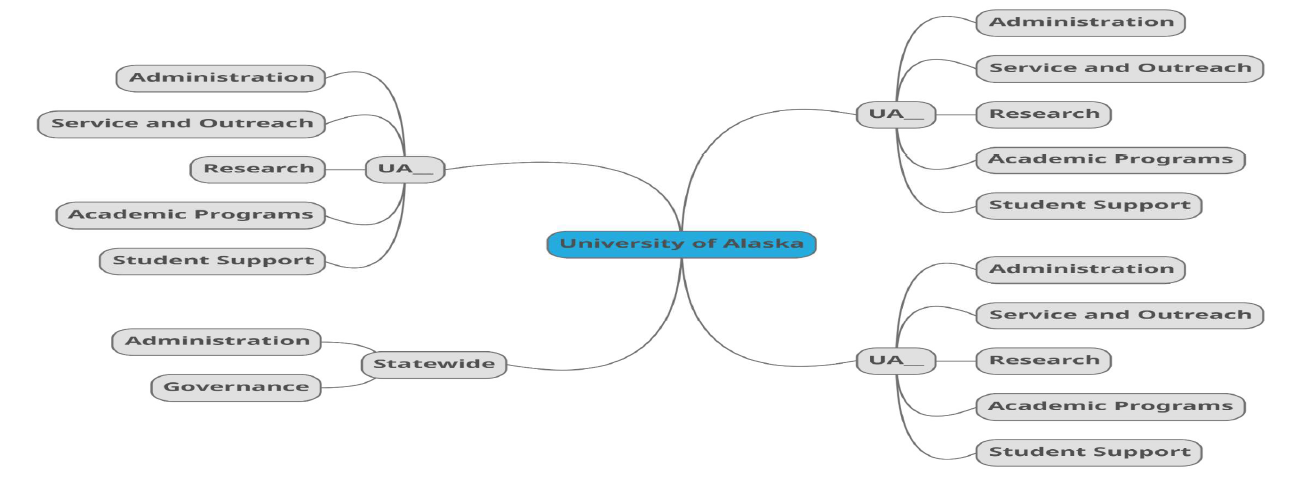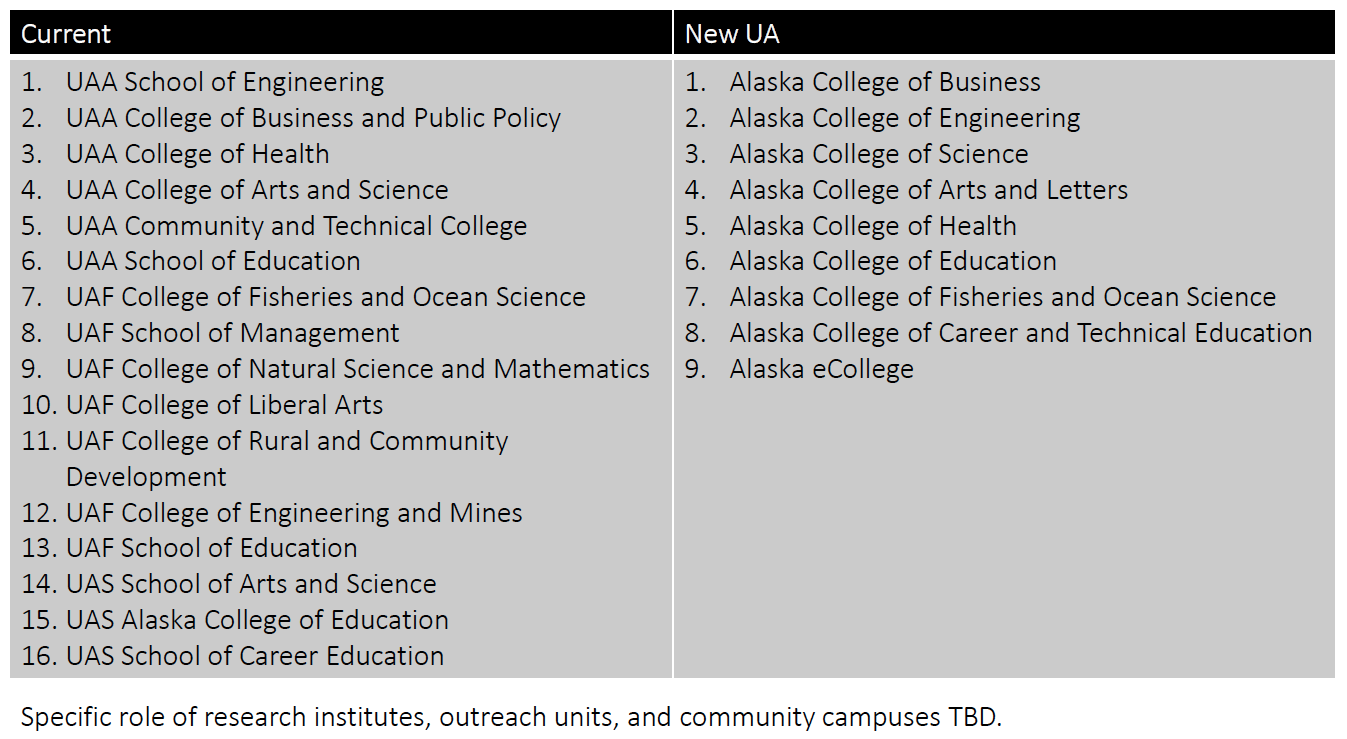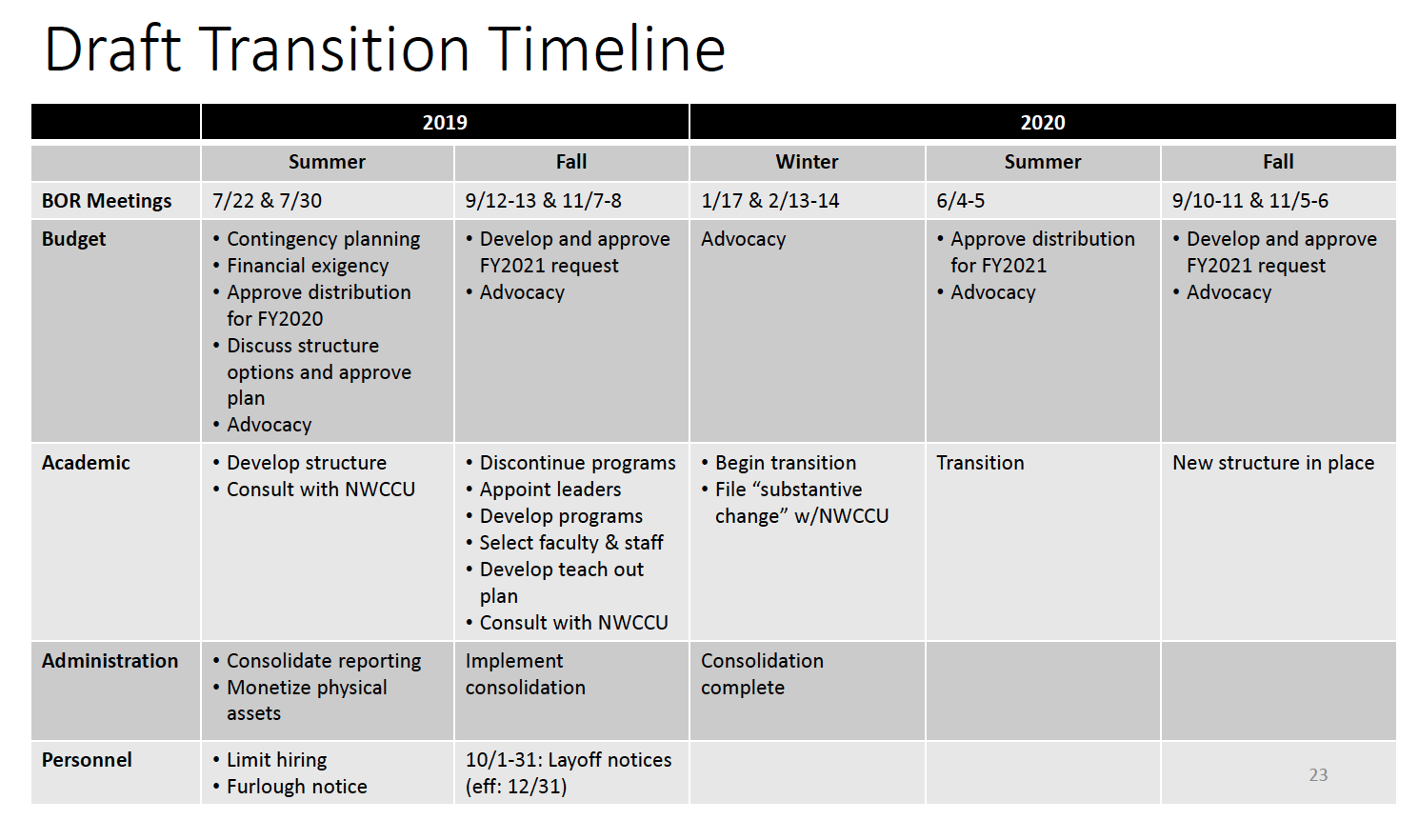University Structure Options
How do we structure the University of Alaska to not just survive, but to achieve UA’s future role in Alaska?
The University of Alaska has taken its first steps toward consolidating its three accredited campuses into a single entity. The UA Board of Regents voted July 30 to authorize President Jim Johnsen to immediately reduce administrative costs and prepare a plan for a transition to a single institution. READ MORE
This action creates a framework for further detailed planning that will occur through the September 12-13 Board of Regents meeting.
Motion approved by the Board of Regents July 31
(Download as PDF)
The Board of Regents, pursuant to its duty to govern the University of Alaska in the best interest of the state, authorizes the president—with interim oversight from a Regents’ subcommittee to be appointed by the Chair—to implement the following steps toward increasing the share of resources devoted to academics and student services by developing a revised organizational structure for the University of Alaska:
- reducing administrative costs immediately through consolidation and standardization of processes in “back office” functional areas including but not limited to information technology, finance, university relations, and procurement;
- preparing a strategic approach to combining duplicative academic colleges and schools, consolidating research institutes, and enhanced integration of community campuses—for review and approval by the Board at its meeting on September 12-13, 2019.
- preparing a plan for Board approval to transition to a single institutional accreditation over the 2019-2020 academic year; and
- consulting through the above steps with student, faculty, and staff governance groups.
BOR Budget/Structure Presentations
- July 30, 2019
- July 22, 2019
- July 15, 2019
- For earlier/additional meeting materials please visit www.alaska.edu/bor
$136 million reduction UGF
In a July 22, 2019 memo to the Chancellors, President Johnsen asked them to prepare a plan that reached a “pro rata” unrestricted general fund, or UGF, reduction as follows:
- UAA $50 million
- UAF $68 million
- UAS $10 million
- SW $8 million
Basic Principals: Access, Focus, Consistency, Sustainability
Options:
- Fewer Universities and Campuses
- Current UA, Lead Campus
- New UA
We can reenvision how we serve the state’s higher education needs.
Eliminate one or more universities or community campuses.
Benefits:
- Limits impact of cut to eliminated units.
- Protects units not eliminated.
- Maintains mission and scope of units not eliminated.
- Less disruptive to faculty and students at universities not eliminated.
- Structure and accreditation not impacted at remaining universities and campuses.
Risks
- Leaves open the question which university to cut, encouraging inter-university and regional conflict.
- Could be either UAF, or UAA and UAS, and additional campuses.
- Denies access to higher education to a large number of Alaskans.
- High negative economic impact on communities.
- Indiscriminately eliminates strong as well as weak programs.
- System Administration unclear in a reduced system.

Distribute UGF reduction proportionately to each university and SW; each unit to reduce into its unique “core”.
Benefits
- Spreads impact of cut proportionately; does not pick and choose among units.
- Maintains some access to higher education to a large number of Alaskans.
- Retains current organizational structure.
- Each university retains its core.
- May result in reduction of duplicative programs.
Risks
- Risks financial viability and accreditation of each university.
- Does not address inter-university conflict, as some may argue proportional distribution not “fair”.
- Lack of agreement around each university’s “core” mission.
- May reduce student choice to academic programs and services at each university.
- Despite recent progress in coordination, substantial barriers remain.
- Not strategic, since priorities would be set at each university.

Simplifying the academic structure
An opportunity to rethink how we organize UA so that it is:
- Designed to “fit” our enrollment and budget.
- A more integrated, single accreditation model for delivering higher education across the state that preserves our core mission at lower cost. Builds on constitutional and legal foundation of single university.
- Delivers education through single “college” for each major field serving the state with a common curriculum, calendar, course blocks, bill, transcript, application, and other processes. Delivery would be both face to face on our university and community campuses and, where feasible, on-line.
- Organized research would be conducted through research institutes with system-wide scope. Service units would be organized in a similar manner.
- Examples of multi-campus systems with a single institutional accreditation include the University of Washington, Pennsylvania State University system, and Kent State University system.
Benefits
- Preserves our strategic core--what’s best about all of UA--and provides it through available resources (programs, faculty, staff, funding) to Alaskans through facilities (campuses, on-line technology) across Alaska.
- Eliminates duplicative units and programs.
- Elevates focus and mission of UA on meeting the state’s needs and local interests more cost effectively.
- Opportunity for common curriculum, calendar, admissions, financial aid, transcript, bill, fee schedule, and other processes.
- Reduces administrative overhead and layers of bureaucracy.
- Increases access to all UA programs for Alaskans across the state, taking advantage of a centralized eLearning hub.
- Increases opportunities for university-wide faculty collaboration in research and education.
- Consistent with Legislative intent: “It is the intent of the legislature that the Board of Regents consider a plan to transition the University of Alaska from three separately accredited academic institutions into a single accredited institution with multiple community campuses, and that the Board of Regents provide an update to the legislature on the development of such a plan by December 1, 2019."
Risks
- Requires substantive change in institutional accreditation and U.S. Department of
Education approval, requiring time and significant effort.
- Recent discussions with NWCCU indicate a viable path forward.
- Possible dilution of mission, lack of mission differentiation at each of the three current universities.
- Requires elevation of primary identification from local campus to the state.
- Centralized leadership and administration must be intentional to connect with local communities.

Simplifying the academic structure


